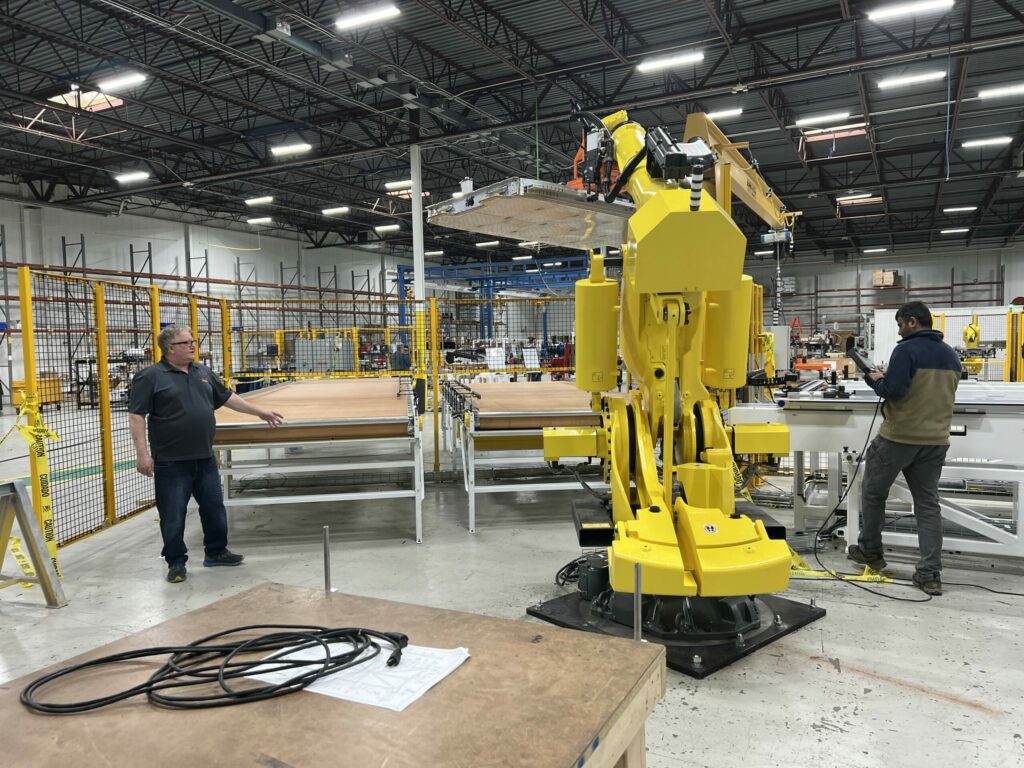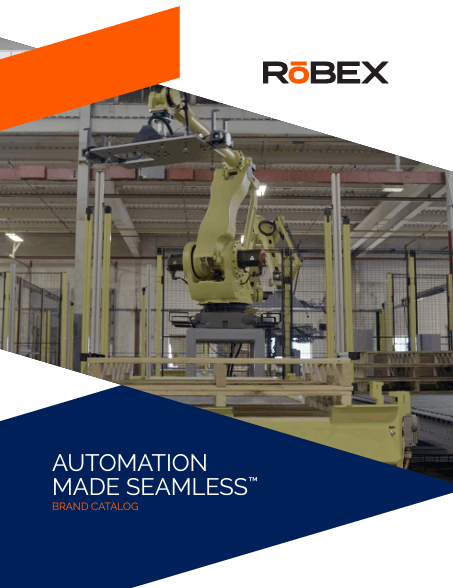How Workplace Robotics Improve Safety & Health
In addition to being more efficient, manufacturing companies
need robotics to keep their employees safe and healthy.
Robots can automate hazardous activities, providing numerous benefits to companies and their workers, including:
- Streamlining material transportation
- Relieving physical strain
- Maintaining precision
- Monitoring potential risks
Robot safety significantly reduces the likelihood of accidents, injuries, and work-related health issues, making it safer and more efficient at work. Below are seven specific ways robotics can improve manufacturing worker safety & health
1. Reducing Risks
Manufacturing companies who implement robotics and industrial robot safety standards can significantly mitigate risks in hazardous assembly tasks. This reduces employee exposure to hazardous substances, extreme temperatures, and dangerous environments. As robot safety and proficiency have improved, automated systems can even competently handle toxic materials, weld, and operate in confined areas and radioactive spaces, removing workers from dangerous situations.
In industries with explosion or fire risks, robots can be tasked with handling volatile materials in those flammable areas, further minimizing accidents and injuries. Automating dangerous tasks anywhere makes work environments safer and protects employees, reducing workplace accidents and improving worker health.
2. Enhancing Material Handling
Autonomous Mobile Robots (AMRs) automate the transportation of heavy or bulky materials in manufacturing facilities with advanced navigation systems, adaptive load handling, and seamless integration. As AMRs automate these tasks, they reduce workers’ physical strain, preventing musculoskeletal disorders, fatigue, and injuries.
AMRs are designed to keep workers safe. They have sensors that detect impending collisions and avoid them. This minimizes accidents and makes manufacturing safer and more efficient. By reducing physically demanding tasks in material transportation, AMRs are also good for worker health and safety.
3. Easing Physical Stress
Using robotics and collaborative robots (cobots) can significantly relieve workers from physically demanding tasks like heavy lifting and repetitive motions. Manufacturing facilities can further improve ergonomics and prevent strain-related injuries by using robotics to perform tasks that require awkward body positions.
By taking these precautions, work-related musculoskeletal disorders (WMSDs) can be reduced, worker fatigue minimized, and overall health improved. Integrating robot safety wherever there are physically challenging tasks makes the workplace safer, more comfortable, and more efficient.
4. Optimizing Workflow
AMRs can also streamline manufacturing processes using their intelligent navigation, flexible routing, and synchronized workflows. Manufacturing facilities employing AMRs are better able to keep up with dynamic production needs, minimize delays, and slash downtime by efficiently moving materials and components.
Additionally, by reducing congestion and clutter, AMRs also make work easier and safer for employees. Due to AMRs’ scalability, they can quickly meet varying production needs. This contributes to safer and more efficient manufacturing improvements leading to a better organized workspace and increased productivity.
5. Minimizing Human Error
When it comes to critical tasks, human error can be a major pain point. Robots, however, are consistent and highly precise. Through repetitive accuracy, advanced control systems, customizable end-effectors, and high-speed operation, automation ensures consistent output while enhancing efficiency and reducing waste.
Robots in particular can be programmed and adapted to specific tasks and integrated with inspection systems for quality control in real time. In Industry 4.0 environments all around the world, robots and robot safety have become essential because of how they increase productivity, improve product quality, and streamline manufacturing processes.
6. Leveraging Human-Robot Cooperation
Cobots are specifically designed to work alongside humans, improving safety and efficiency. There are safety features built into these robots like force-limited joints and sensors to detect human presence. Additionally, cobots and collaborative robot safety standards can be programmed to perform tasks in tandem with humans, reducing the physical strain they may encounter.
Even better, cobots are now relatively easy to program. This makes them even more capable to handle a wide range of tasks, and adaptable to complete distinct tasks. Cobots, like AMRs, can play a significant role in contributing to a healthier, safer, and more productive work environment.
7. Monitoring and Analyzing Hazards Remotely
Robotics, combined with advanced sensors and data analysis, can keep an eye out for potential hazards in the manufacturing environment. Sensor integration lets manufacturers collect data in real-time, and analyze it to identify problems to help minimize workplace accidents and injuries before they happen.
Data collection and processing can also be used for predictive maintenance and automated response measures to add more layers to your robot safety and risk management. Plus, operators and analysts can monitor environments remotely from a safe distance. With robotics, detecting and eliminating potential hazards in manufacturing facilities, like gas leaks and equipment malfunctions, is made easier.
How RōBEX Can Help
Robotics can be designed and integrated in many useful ways to increase efficiency and safety. At RōBEX, we welcome the opportunity to build a custom system to
upgrade your robotic safety standards and meet whatever manufacturing challenges you are facing.
If you are ready to introduce more robust automation technologies into your manufacturing assembly line, we are an automation company you can trust.
In order for your process and workforce to operate more efficiently, we can help implement the finest industrial, collaborative, and autonomous mobile robots.
Learn more about our full-range of services by downloading this free eBook: RōBEX Brand Guide: Automation Made Seamless.
From battery assembly to aerospace/automotive assembly automation, we tailor our approach to meet your needs. No matter the size of your business, our experts will work with you to find the most effective system to streamline your process and increase your productivity.
Contact us to learn more about the RōBEX approach and how we can help.

